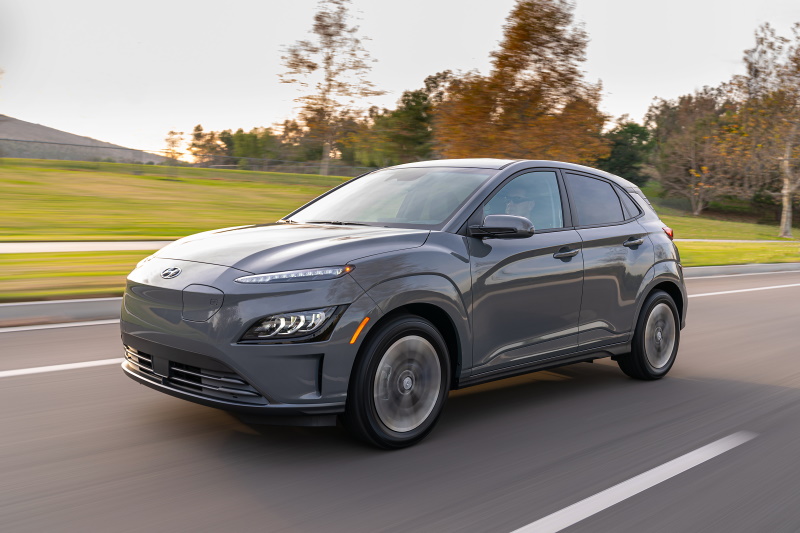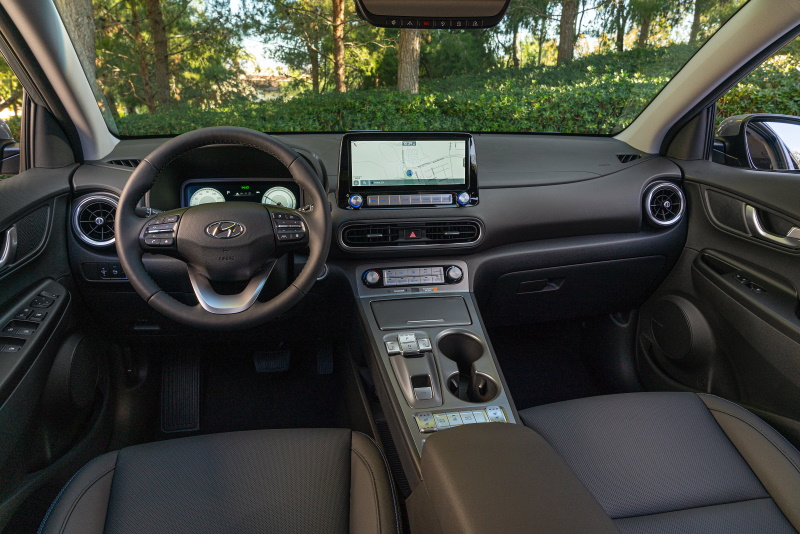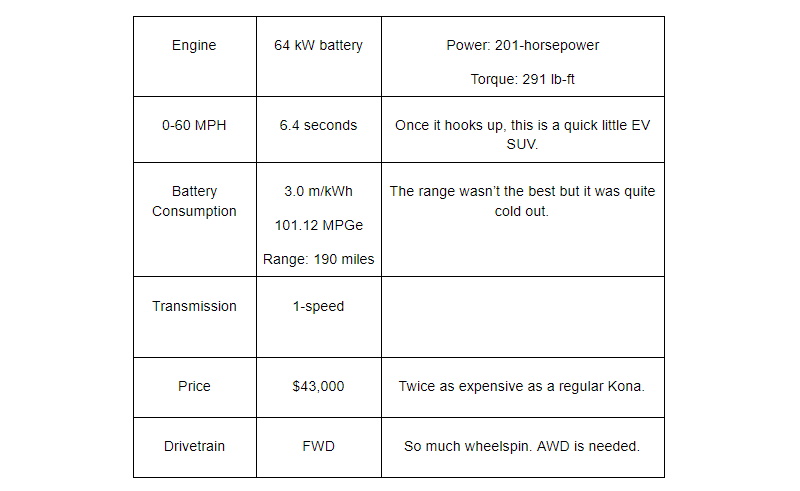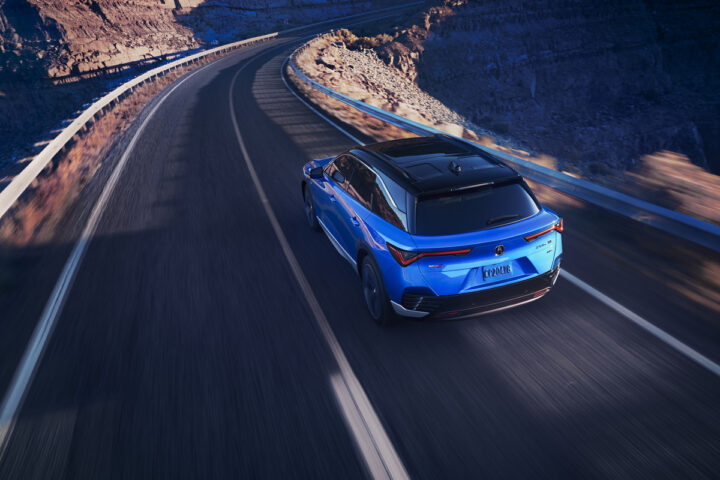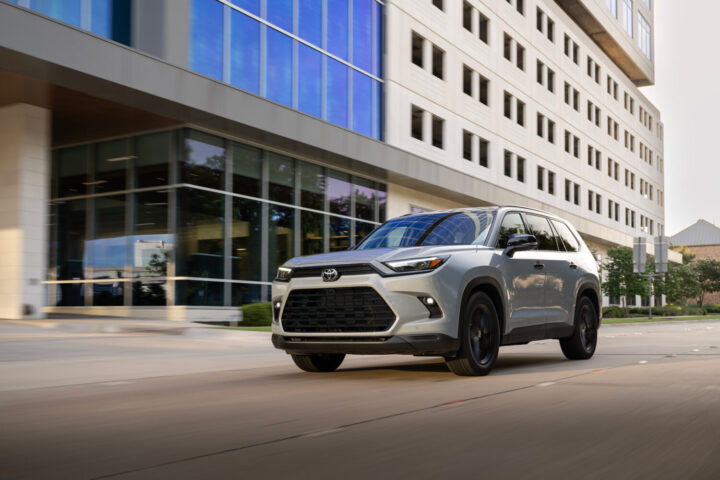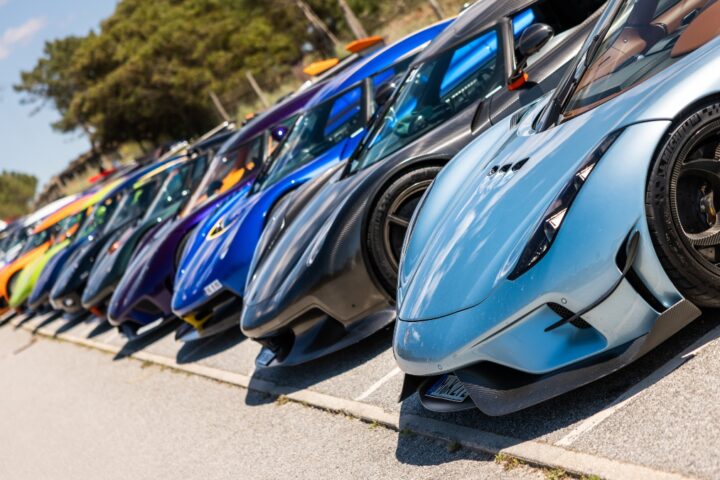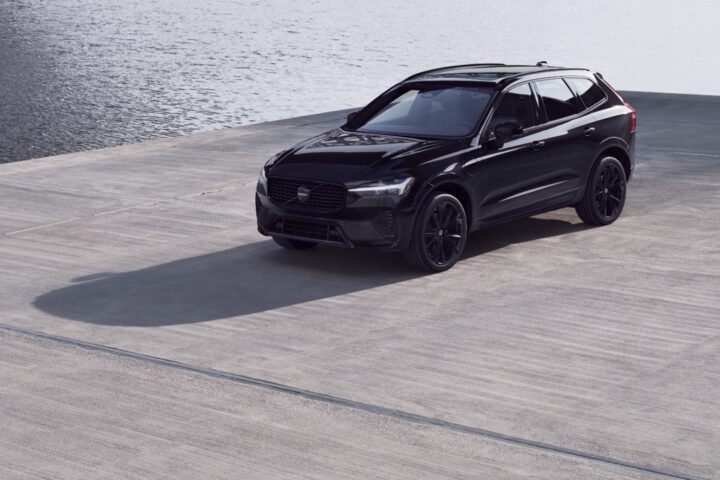In the last few years, Hyundai has been doing a great job of transforming its brand. Cars such as the fun Sonata N-Line, quirky Santa Cruz, and the quite angular Tucson show how much Hyundai has transformed. In terms of their gasoline engines and transmissions, Hyundai does a pretty good job. Yes, the Tucson is slow since it has a 1.6-liter non-turbocharged engine, but the turbocharged engines and eight-speed automatics are great. Out of the range, the Kona is probably the most unique.
After telling you that there are quirky and fast cars, why is the Kona possibly the most unique? Well, the Kona I had was an EV. Basically, the ICE was ditched, and a battery and motors now power it. Before I get into the adventure I had with the Kona Electric, I want to talk about bespoke EVs. There are vehicles that are on their own platforms and built from the ground up as an EV. Hyundai’s new EV, the Ioniq 5, is a bespoke EV which means that there are heavy design changes compared to the Kona. Changing a gas-powered Kona to the Electric was definitely interesting. Since this Kona now runs on electricity, it’s almost doubled its price tag to $43,000 as the Limited model!
This time, my fun adventure was driving to a charging station. Actually, I had to go to two charging stations when it was snowing. Of course, after that, the adventure went into overdrive as I drove the Kona Electric around many car dealerships. It’ll make sense later on. For now, let’s talk about the looks of the Kona Electric. Hyundai made some changes to the exterior, with the biggest change in the front. The regular lights are here, but the front end is dominated by the lack of a grille. Electric cars don’t need grilles, but the Kona Electric looks like it’s a face missing some type of styling. What I really don’t like is the charge part is at the front which doesn’t look cohesive with the rest of the front.
If you looked at the front or rear-end of the Kona Electric, you wouldn’t really know it’s electric. Yes, there is a badge that says “Electric” but if you didn’t see it, you may confuse it with the gas version. I like the two silver design elements on the front and end. Speaking of the rear-end, it’s a mixture of a few different designs. It isn’t a busy design, but the rear window looked quite small. Combine my Kona Electric’s Pulse Red paint and 17-inch wheels and the Kona looks like a quirky and exciting little SUV.
Inside, the theme of looking like a regular Kona continues. Looking ahead is a steering wheel with media and safety features along with digital dials. There are paddle-shifters behind the steering wheel, but those are used to modify how much regeneration you get when you lift off the throttle. More on that in a bit. Kona Electric Limited models get every option you would want. Some of these include heated and ventilated front seats, wireless charging, heated seating wheel, and sunroof. Hyundai’s 10.25-inch infotainment system was very easy to use, although I just used Apple CarPlay.
Something that is rare in an electric vehicle that the Kona has is physical buttons. It’s nice that there are physical buttons for the climate control along with the buttons for the transmission next to you. Even though there are also buttons for the heated/ventilated seats and heated steering wheel, they’re right in front of the center console and hard to touch while driving. Even though there is a parking brake switch, there’s some odd design feature that doesn’t need to be there. If you’re a larger American, you’ll see that the rear seats are very snug. When I drove around, my passenger complained that they didn’t have too much room in the front and that the materials felt cheap. I have to agree on the latter.
This may be based on a $25,000 car, but the electric motor commands the massive price tag. Under the hood, the Kona Electric has a 64 kWh battery pack which produces 201-horsepower and 291 lb-ft. This drives the front wheels via a single-speed transmission and gets the Kona Electric from 0-60 MPH in 6.4-seconds. While I can’t dispute that number, I’m just amazed that Hyundai didn’t have the same struggle for traction. If you tried to accelerate too hard or floored it, the whole car would just shiver as the tires try to find grip. If this was all-wheel-drive, it wouldn’t have this problem but would be even more expensive.
On the road, the Kona felt like a little EV hot-hatch. Once the wheels decided they had enough grip, the Kona was quite smooth in its power delivery. On some twisty roads, you do get some understeer but nothing too bad. Ride quality is like a regular Kona but with an electric motor, so it went over bumps without too much of a fuss. The long drive on the highway was simple thanks to all the safety equipment. Being an EV, the torque comes from 0 RPM, and having a little thing like the Kona Electric zip by people was quite fun to do.
What’s not fun is charging. I charged at three different places: a 50-kW charger, 150-kW charger, and at home. A few times I would charge the Kona during the night, and I never dipped below 50% battery. Still, the Kona Electric did get some interesting results. The first is the range. The Kona Electric measures in miles/kWh, and it achieved 3.00 miles/kWh or 101.12MPGe. This was during winter here in Illinois and every heating element was used. The quoted range for the Kona Electric is over 250 miles, but I managed 190 miles. This is the mileage with the heat off because when you switch between using the climate control and not can greatly affect range. There was a 50-mile decrease in range when I switched on the heater!
Electric cars aren’t cheap, and the Kona Electric isn’t either. This was the Limited trim which comes with every option and lists for around $43,000. As I said, it’s expensive, but it does qualify for the $7,500 tax credit. When I first got the Kona Electric, I thought it was silly that Hyundai made the Kona an EV. Thankfully, it works. If you want one, Kona Electrics are only sold in California, Connecticut, Colorado, Maine, Maryland, Massachusetts, New Jersey, New York, Oregon, Rhode Island, and Vermont. It’s funny that the Kona EV is sold to those states since all-wheel-drive is almost needed! Still, if you want a small and fun EV, the Kona Electric is a great choice.
The Numbers

